PHOTOS: Stone’s indoor-outdoor dwelling on the outskirts of Joshua Tree
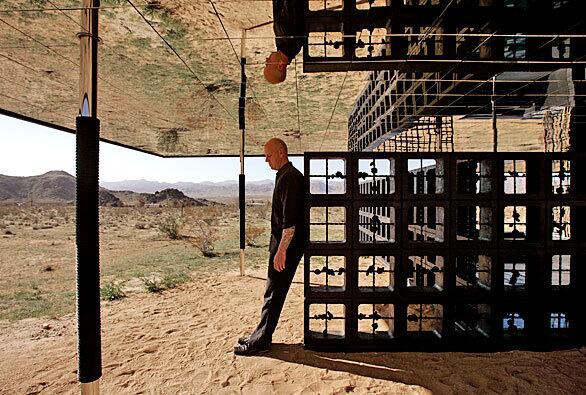
By Barbara Thornburg
Robert Stone — former punk rocker, studio artist and now architect — has built a one-bedroom retreat called Rosa Muerta on the outskirts of Joshua Tree. Chrome columns rise from the sandy desert floor to support a ceiling plane clad with mirrors. Stone left the arid landscape that surrounds the property unaltered. “My architectural practice is more related to how artists work,” he says. “I’m trying to do something amazing here. I learned as a kid doing my music that you have a right to come up with something brand new.” (Ricardo DeAratanha / Los Angeles Times)
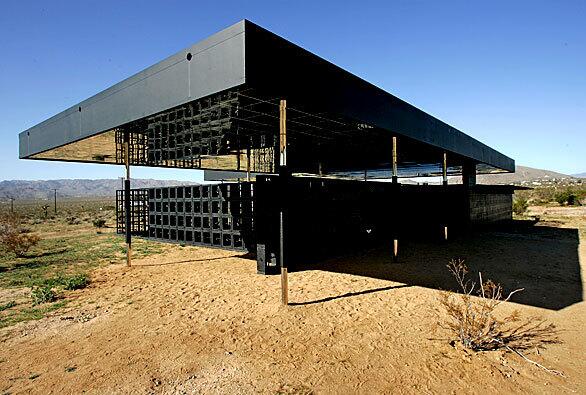
Rosa Muerta, Stone says, “offers you a chance to re-frame and re-create your own world ... if only for a weekend.” The minimalist structure has four rooms: a spacious outdoor living room with spa, fire pit and barbecue; a bedroom; a bathroom; and a small kitchen. (Ricardo DeAratanha / Los Angeles Times)
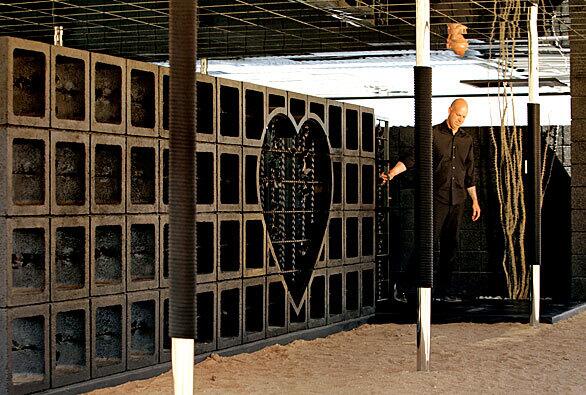
The custom steel gate is interwoven with black metal roses. The 8-foot-tall house sports interior ceilings just shy of 7 feet. “My friend who is 6-foot, 8-inches buffs the ceiling mirrors when he comes,” says Stone, who rents out the retreat. (Ricardo DeAratanha / Los Angeles Times)
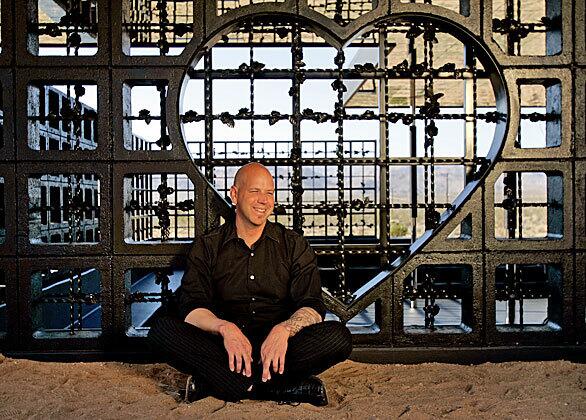
Stone sits by a 5-foot-tall heart-shaped window fashioned in custom cast cinder block. Stone rents the dwelling to intrepid “glampers,” a term he derived from “glamorous camping.” He put his heart and soul into the three-year project, constructing it himself. “It’s serious architecture,” he says, “but it’s also fun. Why can’t it be both? People always want to make it one thing or the other.” (Ricardo DeAratanha / Los Angeles Times)
Advertisement
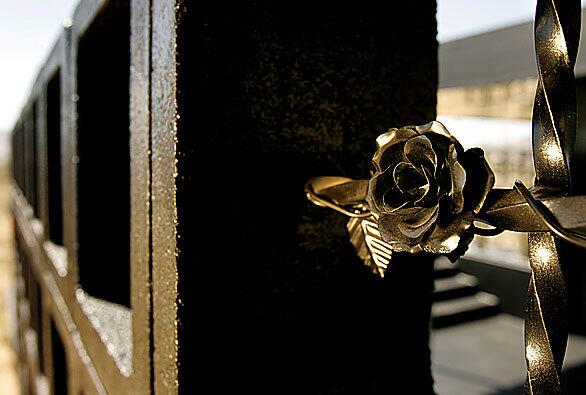
The black cinder blocks are graced with metal roses — 1,000 of them. (Ricardo DeAratanha / Los Angeles Times)
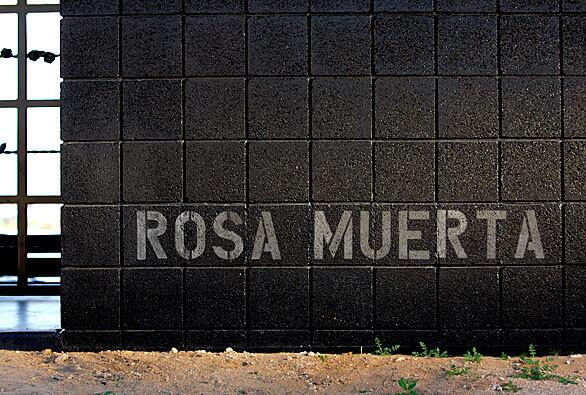
The pavilion’s name, which translates to Dead Rose, is stenciled at the entrance. “Things always sound more romantic in Spanish,” says Stone, who thought the name conjured visions of tattoos and one of his favorite lowriders, a 1963 Chevrolet Impala dubbed “The Gypsy Rose.” (Ricardo DeAratanha / Los Angeles Times)
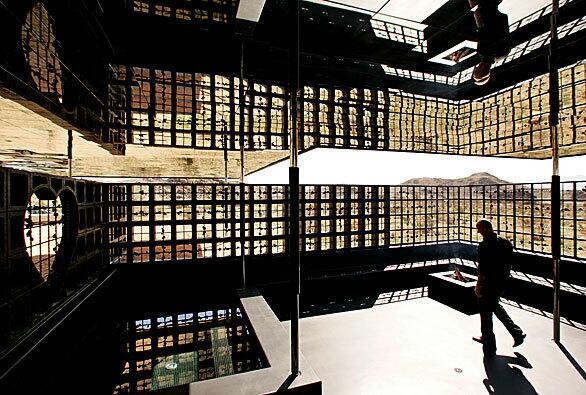
The pavilion’s living room is appointed with a large spa, fire pit and barbecue. Ceiling mirrors reflect the room with a mirage-like image. Poured-in-place concrete steps and benches frame the fire pit and offer space for guests to put their sleeping bags, if they choose to spend the night under the stars. Weather can be an issue when staying at Rosa Muerta; with temperatures over 100 degrees on summer days and below 40 on winter nights, extra blankets come in handy. “It’s all part of the experience,” Stone says, adding, “generally the weather is magical.” (Ricardo DeAratanha / Los Angeles Times)
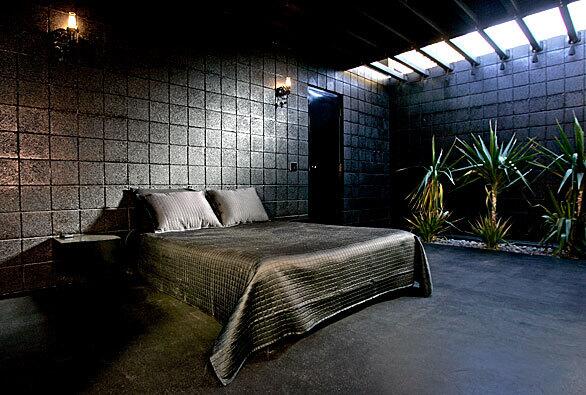
A king bed covered with a quilted duvet sits atop the matte black concrete floor in the bedroom. The building and everything in it are black — as much sculpture as home. (Ricardo DeAratanha / Los Angeles Times)
Advertisement
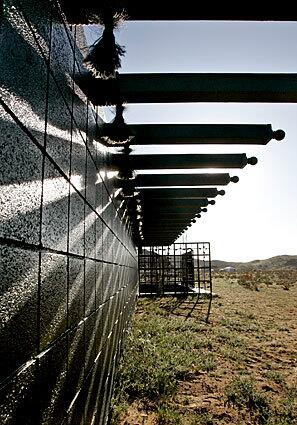
Exterior beams are wrapped with double-braided nylon rope with tassel ends, which Stone occasionally combs. The architect credits inspiration for the Japan-esque style to Tom Ford’s 2002 collection for
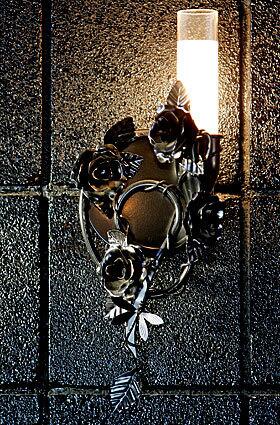
A metal rose sconce: It’s pretty, but you’ll still needs a coal miner’s hat-light to read in the inky bedroom. (Ricardo DeAratanha / Los Angeles Times)
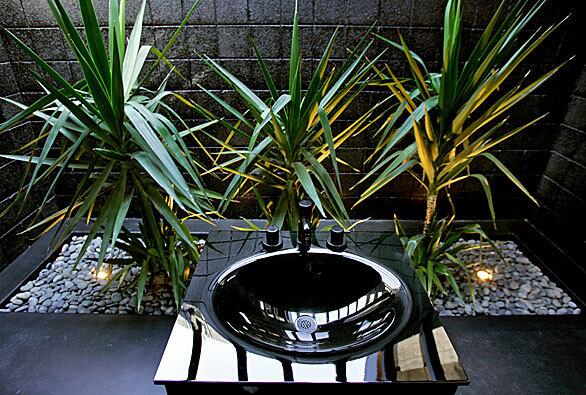
Sculptural Spanish daggers bring the outdoors inside. The free-standing black-mirrored sink is another custom element of the pavilion. (Ricardo DeAratanha / Los Angeles Times)
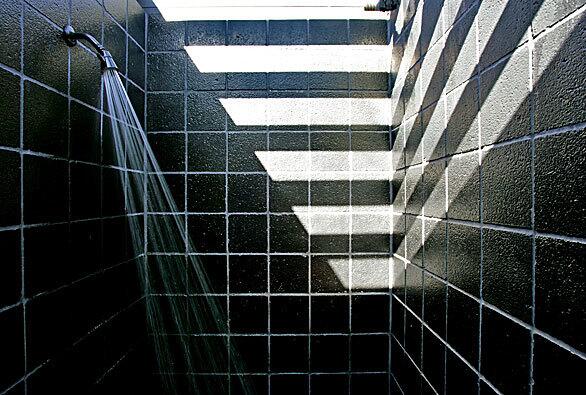
A graphic play of light is reflected off the black cinder block walls in Rosa Muerta’s open-air shower. (Ricardo DeAratanha / Los Angeles Times)
Advertisement
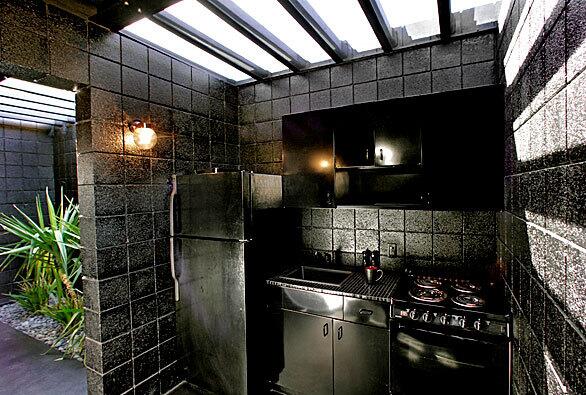
Even the kitchen — sinks, faucet, stove, cabinets and refrigerator — is jet black. “Black is a foil,” Stone says. “People are the color that bring it to life.” (Ricardo DeAratanha / Los Angeles Times)
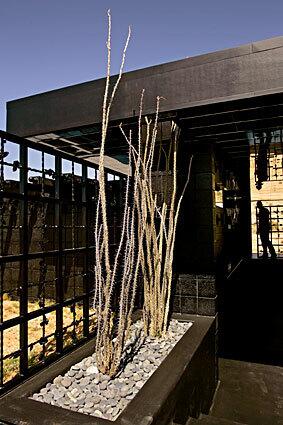
Ocotillo rise in two corners of the living room. Stone rents out Rosa Muerta through his development Pretty Vacant Properties, named after a Sex Pistols song. “This place is not for 99% of people,” says the architect, flame tattoos shooting up his arm. “It’s a rental house, but we ask more of people who come here. I’m creating a place for people to create their own experiences. It takes a bit of bravery. Each person has to figure out how to live in it.”
For a look at more Southern California design, go to our Homes of The Times gallery. (Ricardo DeAratanha / Los Angeles Times)



